Welcome back as we kick off the second year of the 50 States Project, a series of candid conversations with interior designers across the country about how they’ve built their businesses. This week, we’re starting at the top of the alphabet with Alabama: We catch up with Mountain Brook–based designer Betsy Brown, who tells us what “getting in front of clients” means for her process, why she’s never able to sleep the night before an install, and how the right books are her favorite finishing touch.
When we first started emailing about this series, you told me you needed to check in with your firm’s managing director first. I don’t think I’ve ever had anyone tell me that before, so I’m dying to know about her role in your firm and how you work together.
If I could have chosen the work that I do early on, I wouldn’t have chosen to run a company. I have a daughter who runs an outdoor adventure business, and she runs it brilliantly—she knows all the numbers backwards and forwards, and she can’t understand why I don’t. She has people that are experts in actually doing the work, but she runs the business part. I always tell her that I just do the opposite.
Have you always had some sort of business manager, then?
No, I did the design and the business for years, but it’s really hard to do both. Anna [Still] contacted me about eight or nine years ago looking for a job—she was moving here from Atlanta, where she had worked for [design showroom] South of Market. I told her, “I don’t need another designer—what I need is an office manager.” And she said, “Great, that’s what I want to do. That’s what I like.” And it just clicked. It was shocking to me how organized she is, how productive she is, and how she can create an office environment that I’ve never been able to do—one where people have their heads down and are working hard, and then they stop all of a sudden when somebody tells a joke or a story about their life, and it’s like the sun comes out, and then we all go back to work.
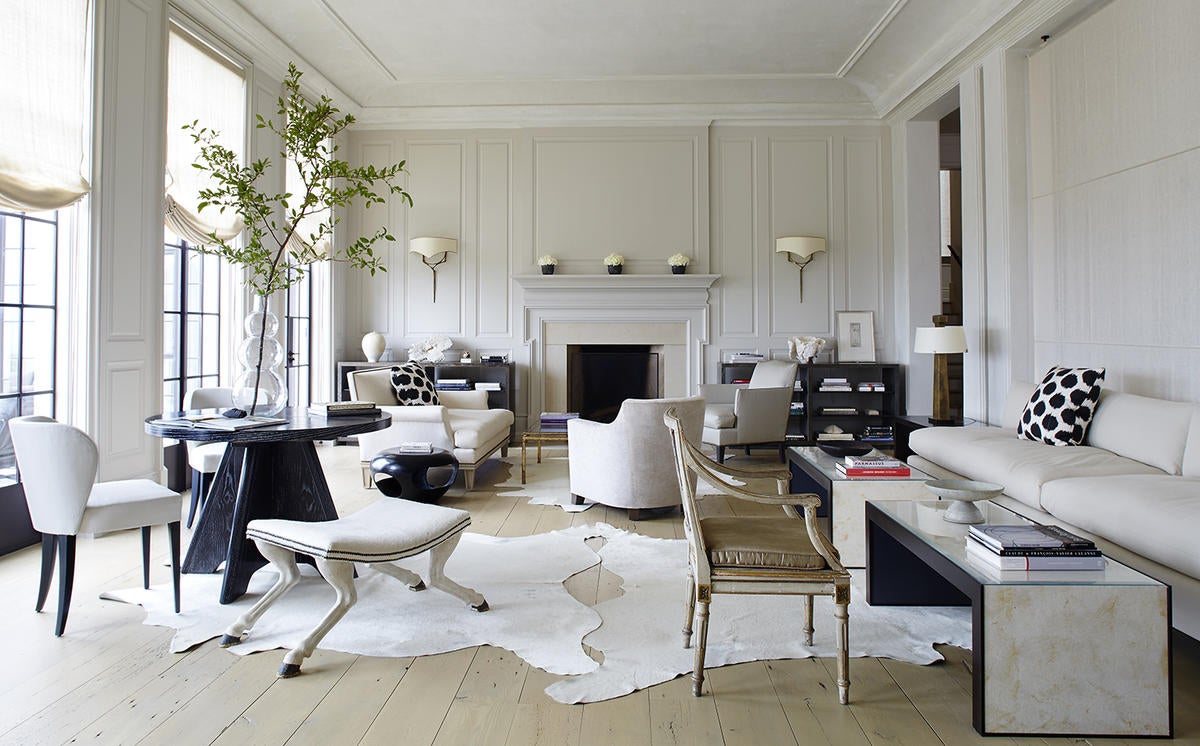
That’s the part I miss about actually working in an office! How great that you found someone who can create that mood.
I’m basically one of her employees, like everybody else is—or that’s the way I look at it, though of course I get a lot of input in how things are done. But when I went in yesterday, I got my red, yellow and green to-do list—critical things that we need right away, things due next week, and the things that need answers. Everything is concisely divided into actionable items and time frames, which is so helpful for me, because I’m seeing the big picture of the project. There are things that are important to me—like, I really need to resolve whether this room has an old rug or not before I can figure out how many other old pieces need to be in the room. But she doesn’t see it that way. She wants to know what needs to be ordered right now. And even though an antique rug doesn’t need to be ordered right now, I need that in order to know how to select everything else and create the balance that I want.
You have to balance your competing priorities.
And I think it takes a very deep understanding of design and the process to do her job the way she does it. It takes somebody that could be a designer, but who has an engineer’s brain. When we go over our list of items for a project, she’ll say, “We made a credenza like this a year ago for another project and you made it 32 inches high. Now you’ve made it 29 inches. Why did you lower it?” I don’t know! Or she’ll say, “I’ve gone through this plan, and the architect has drawn sconces on the elevations in these two bathrooms, but he’s showing an overhead light and no sconces in the plan.” She can find every single detail that is incorrect.
That’s an extraordinary gift.
It is. She has to visualize everything from start to finish and design the process in order to do what she does. And because she makes sure every single detail is correct, when we’re working on a new house, we won’t go by the plans—we have to measure every single room and ceiling height.
Because it doesn’t always quite turn out the way it’s supposed to on paper?
There was one project where we had planned to put a pair of demilunes in a bedroom, one on either side of the door going in. The doors opened out on the plan—but in the house, the doors opened in. So now we had an $8,000 pair of antique demilunes that we can’t use! That’s why we’ve learned to take pictures and measurements, and then go over every piece to make sure that there aren’t any hitches.
When Anna joined the firm, how did that change your role?
Well, for one thing, we started taking on more work, because I was able to increase my design work. She was able to let me relax and concentrate on the thing that I’m good at.
What does the rest of your team look like?
We have Anna, a bookkeeper, and two designers that each take on separate projects. They take my space planning and draw it, and then I make the selections of the furniture and they do the elevations of the furniture in place. We design a lot of furniture, so they do the elevations of the furniture that we’re designing and keep meeting with me until all of the work orders are correct. They’re very talented, but I’ve never been able to let go of the whole—you know?
The vision piece of it?
I just can’t, and I try to. But I feel I have to get my hands in it.
Is it a sense of, “That’s nice, but it’s not what I would do here,” or something else?
Other people seem to do it really well, and I tried it out, but I felt like the designers that were working for me were designing for me and not for the client—it’s almost like they have two clients, and it becomes kind of watered down. It’s like they weren’t brave enough to really see their own vision, though that might be because I didn’t let them. I worked for Birmingham designer Jane [Hawkins] Hoke when I was younger, and I could only see what she did. And everything she did was great, but it wasn’t until I left that I began to notice that I was drawn to different things. I remember thinking, “Why am I all of a sudden liking these really simple pieces?” It was my own taste evolving into what it is now: more masculine, more tailored.
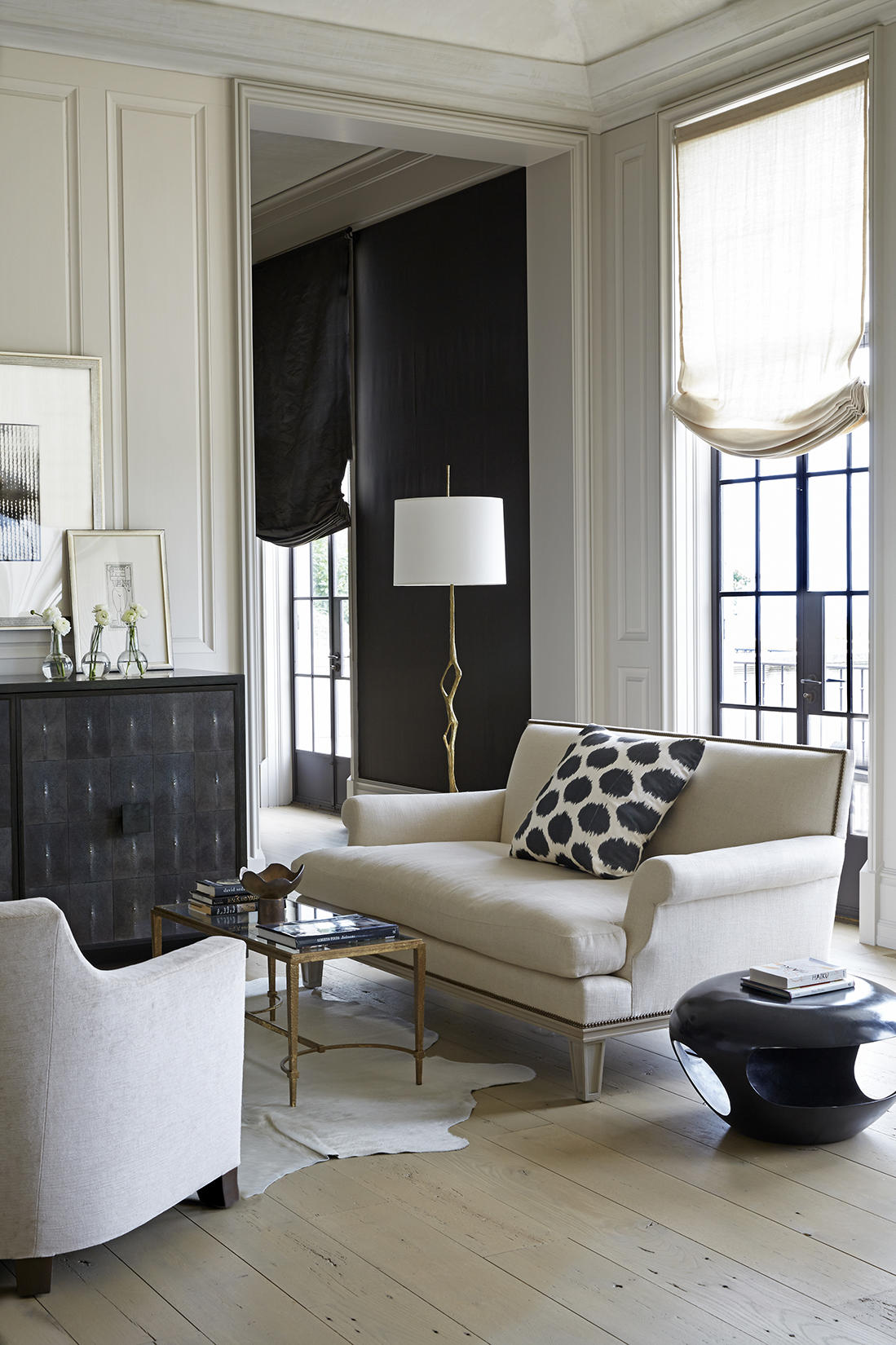
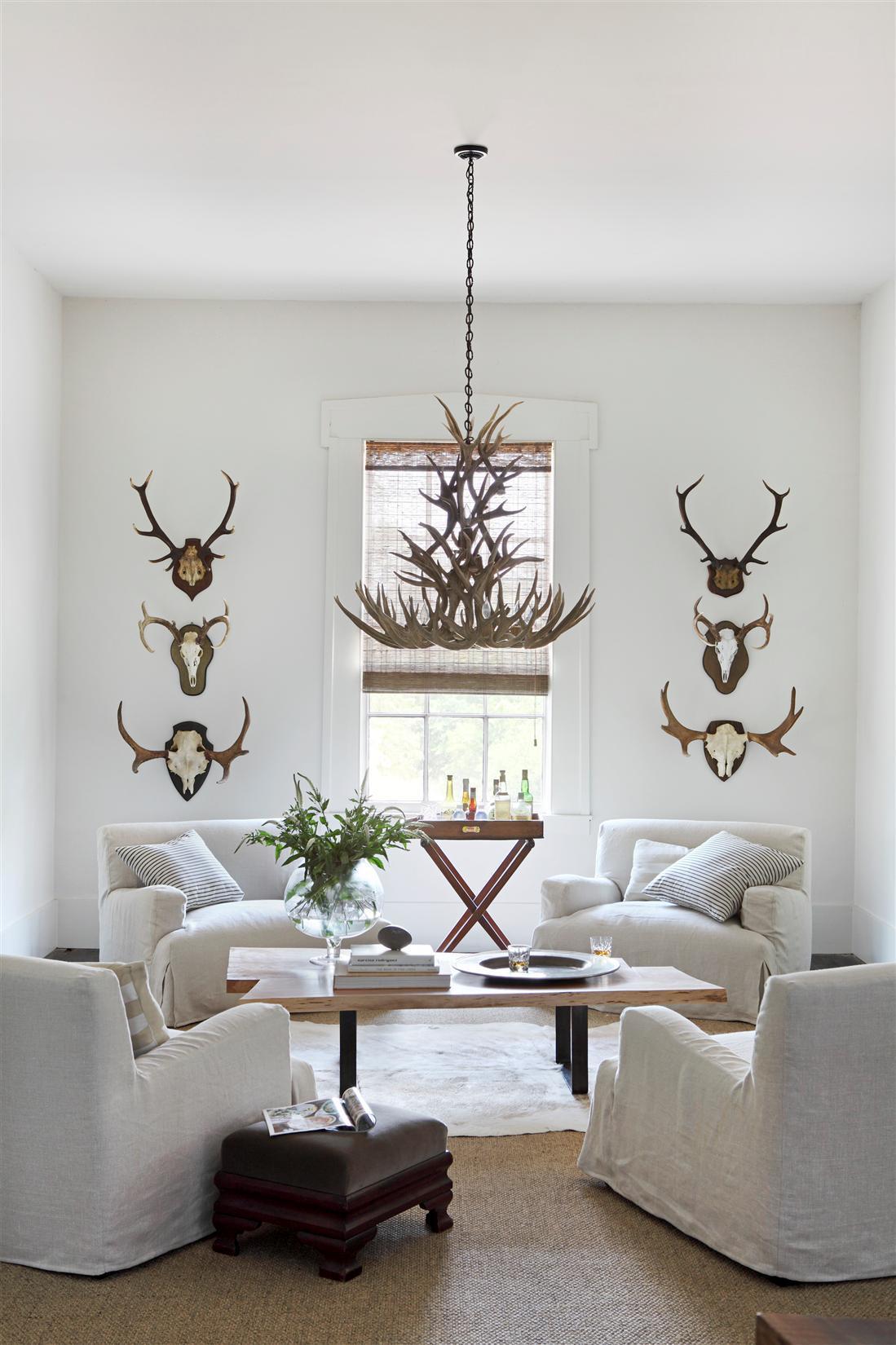
What are your early memories of being drawn to design, and how did that turn into a career for you?
It’s not like I was one of those people that grew up obsessing over houses. I wasn’t. My mother loved design, but she was also obsessed with it, always changing her house. Things were always in a state of flux, and I could see how frustrated she was by it. It was like she couldn’t really get it the way she wanted it, and through that, I came to understand this sense that women have—not men—where they’re judged by how their houses look, and it’s scary for them.
The idea that someone’s going to come over and make assumptions about me because of how my house looks.
Yes, they’re going to make a judgment about me based on how together my house is, or how cool it is, or how messy—for some people, it means so much to them to get it right, and to have it be representative of who they are, that I think they almost freeze. And I do think that’s the value of a designer: They let you relax.
Anyway, I have a sister who is two years older than I am, and she decided that she was going to major in interior design. I thought, “What the heck, Sally’s house is not going to look better than mine—that would be awful.” So I decided that I would study interior design, too. I mean, what can you actually know when you’re 18 years old?
Well, it seems you got it right!
I went to Auburn, started studying design, and sort of realized that I had some spatial sense that I wasn’t aware of. I’ve done it for so long now, and it’s really fulfilling.
Is there one thing you love the most?
Seeing people respond after we do installations. It is so much fun to have somebody walk in and go, “Oh, my God, is this my house?” It’s a blast. When I was younger, designers worked more piecemeal than they do now—people would come in, pick out a rug, and the next time they’d come in, they’d pick out a sofa and two chairs, and the things would be delivered over time.
When did that start to change?
About 20 years ago. I would talk to certain designers whose work I liked, and I was sort of shocked that it was all done at one time. Bobby McAlpine was one, and I think it’s because, as an architect, they have to figure out everything ahead of time. All of a sudden, we just started doing it that way, too, and it felt so much easier. There wasn’t a lot of second-guessing about what to do. It wasn’t like, “OK, now that we’ve done this, do we do this or this? Or maybe I shouldn’t have done that.” It was a relief to figure out everything and have it all on paper.
But a bigger lift on install day, to be sure.
Even an architect gets to see their houses built gradually, so they can make changes if they need to. We try to have every i dotted and every t crossed in advance, with the exception of a few accessories that we do on approval. I’m always terrified the night before an install—I can’t sleep because maybe this will be the time that it doesn’t work. But it always does. Halfway through the first day, I’m like, “Yes.”
Does that change your relationship with the client, too, when you have to establish the vision upfront?
Yes, and I’ll tell you why. I remember asking Bobby, “How do you keep from having the client control the design process?” Because it can be painful if they’re working with you on every single decision as you go along. He looked at me and said, “You have to get in front of people.” And the point of it, which I totally took to heart and it changed the way I work, is that we do every interview and questionnaire and discussion and have a whole lot of back-and-forth—we do everything so that we really get to know people and hear the things they love and don’t love. But then we need to do the work without a whole lot of communication. That work results in the proposal.
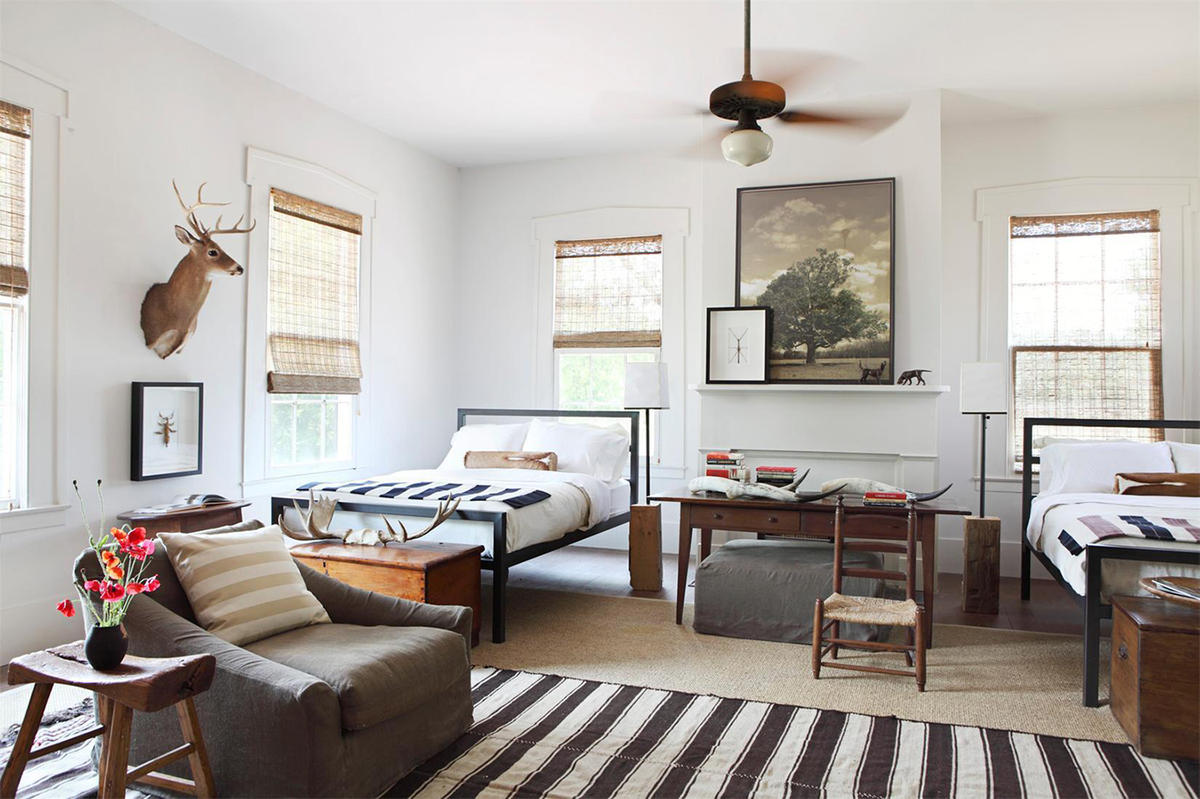
What does that look like?
Our proposals are usually a two-step process. We present once, take note of every single comment that they make, and then we do revisions and present the second time.
And that would be in person with samples if COVID doesn’t exist?
Yes, it’s everything. With people who want to be extremely involved, we won’t price everything yet—we’ll wait and let them give their feedback, and then on the second go-around, we price it, because pricing takes so much time. But for some people, we just price it all right off the bat on the first one. Once they give us feedback and we make the changes, we usually nail it on the second one.
How many projects are you working on now?
Probably about 15, all in different stages, though I would love to hear how other designers schedule. It’s so strange to me how you can try to space projects out. At the beginning, it works—and then half of them are delayed, or some of them go faster. This fall, we had six installations from September to December. It’s hard, because there’s so much work at the end—but at the same time, you can’t tell somebody that you can’t install their house for six months. They want to be in it as soon as it’s done.
How do clients find you these days?
Instagram more than anything else. Word of mouth, too—and we get a lot of recommendations from architects. I think they like working with us because we’re really good at catching problems and we’re great at communication. We’re good team players. Our work makes their work look good. Also, anytime something’s been published, we get three or four jobs from that.

When you were starting out, what was your path from graduating to starting your own firm?
I graduated in 1976. There was a wonderful guy here in town, [the late] Joe McKinnon—this fabulous ’70s designer who used really deep, rich colors and had a very European style. Do you know the restaurant Bottega in Birmingham? It’s a double-sided Italianate building and Bottega has both sides, but back then, Joe McKinnon was on the left side. I remember walking in there and I said, “I would like to work for you, and I’ll work for you for free. You don’t have to pay me anything.” And he turned me down!
Did he really?
It turns out he had several kids who were about my age working there, so it was just like, “I don’t want another kid in here that doesn’t know how to do anything.” So then I went to the person I thought was the second-best designer in town, Doris Schuler, who was this very wealthy grande dame. She had several younger designers working for her—they were younger, but they were probably in their 40s or 50s. I said, “I’ll work for you for free,” and they said, “Great.” After about two weeks, they started paying me. I drew up a new floor plan for their offices, and they rebuilt the inside based on that. I think they were just entertained by somebody that had actually been to school back then.
I worked for them for several years, and then I worked for Jane Hoke for a few years. And then I got pregnant and realized that I was only being paid about what I was going to be paying a babysitter, so I quit and started on my own—I rented a building and just started working. I did a lot of drawing for other designers to start with to help pay the bills. But I’m still working with my very first clients—I just finished a lake house for them, and we did a house down in Jupiter Beach for them. I started working for them when I was pregnant with my first child and she’s 40 now.
That’s amazing. How did you meet them?
An architect here in Birmingham recommended me to them right at the beginning. When he wrote down my name, he didn’t cross the t, so the client thought my name was Belsy. He calls me Belsy to this day.
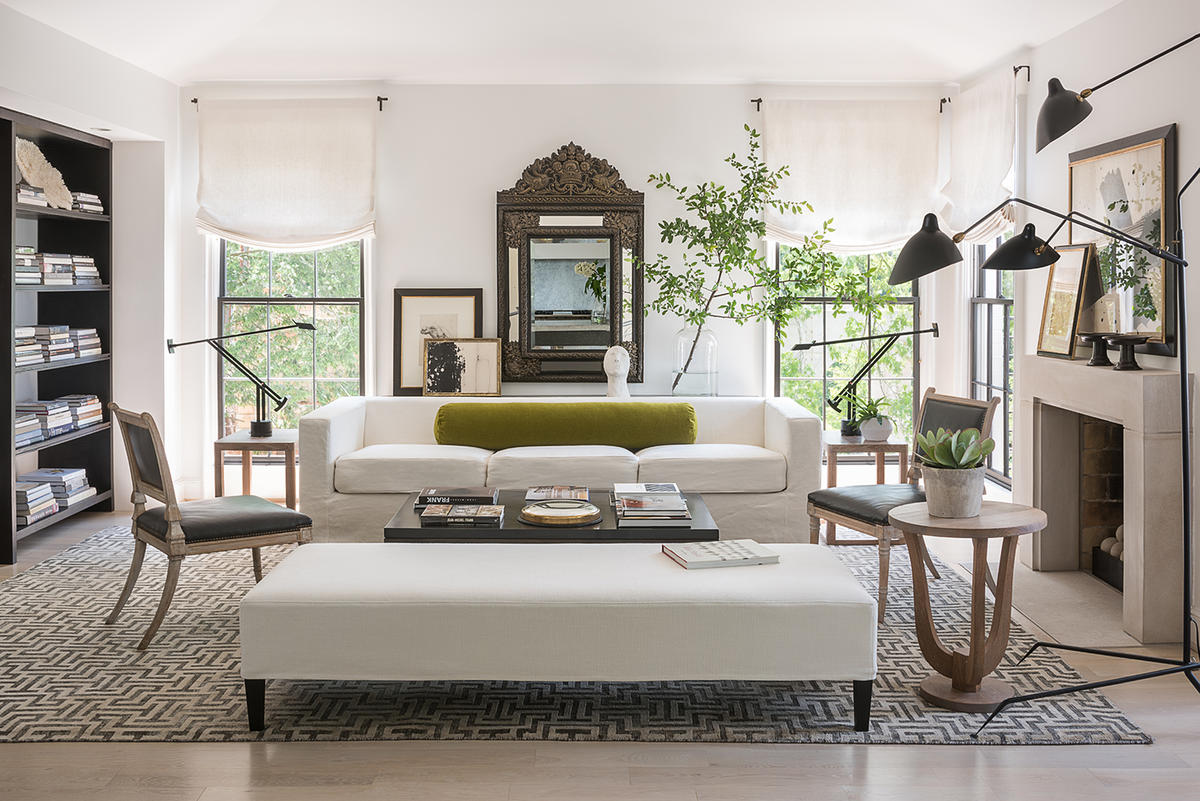
What’s the secret to a great client relationship like that?
You interviewed another designer for this series who said that if there’s ever an issue, she takes the hit because it’s the best PR, and I totally agree with that. If there’s a problem with anything, I always tell myself in two weeks I won’t even be worrying about this—I usually just absorb it and move on.
At the time, did you have a good sense of how you wanted to set up the business?
At the beginning, I let the client control the process—it was only later that I realized they don’t know how to do that. But I was so young and it was intimidating to me.
What I learned later is that it is important to figure out a budget ahead of time and to figure out how far we could go with it and what they needed, so that at the very least, they would end up with lamps on tables and their life would be comfortable. It took me a while to realize that I needed to tell them what to do in order to make things work.
How do you have that conversation about budgets and billing today?
When they call us and they’re like, “How much will this cost?”—like anybody will tell you, it’s an impossible answer because every client and project is different. Plus, there are parts of every project that are very expensive that are not product or time billing, and those are shipping and receiving and storage and installation. Those things are very expensive, and they’re just a cost, they’re a part of the project.
After the interview, if the client wants to go forward, we send them a simple engagement letter that explains our hourly billing and our markup. We also send them a spreadsheet of a few recent projects that are similar in size so they can see every aspect of the project broken down—its square footage, overall price, and how much was spent on shipping, receiving, storage and installation so that they won’t be upset later when they see those costs.
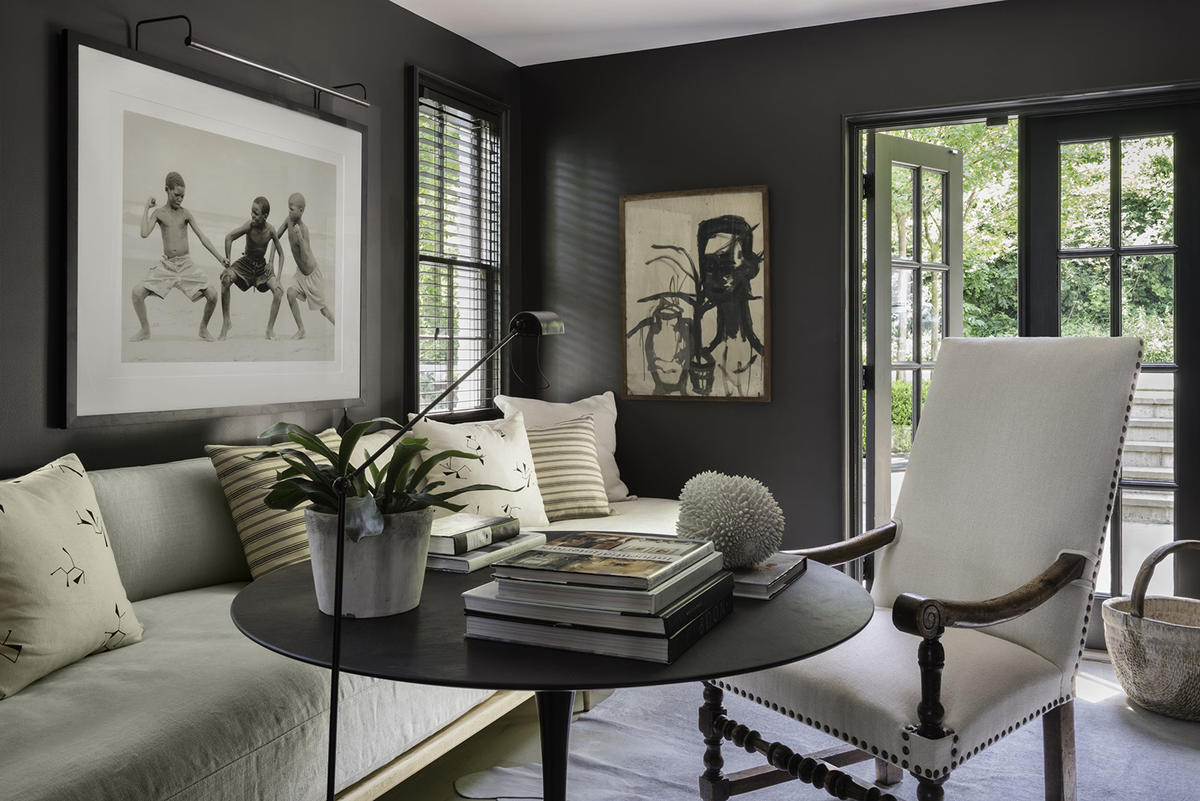
That’s so smart to use a real example from an actual project. I bet it helps drive the point home that these costs really exist! How do people respond to that document?
They’re usually grateful. I mean, generally they want to say, “I want this one that has the lowest price per square foot,” which is fine. Or they can look within that list and say, “I totally understand how all these add up to this, but I don’t want to go over this amount.” And then some of them don’t care, but at the very least, they know how to budget for it. Because they can see exactly what it is, it keeps you from having problems later on.
That upfront, “Here’s what it is, nonnegotiable, but we want you to know about it.”
Right, there’s no negotiating on installation costs. We also do a term sheet where we list the things that are a given in the project—and one of those things is that we place all the orders. We order or build everything, have it shipped to Birmingham, and it stays in our warehouse. We have wonderful installers, and their warehouse is wonderful: It’s a big space where we can lay things out and stage them if we need to, or the furniture finisher can come over and look at something if it’s going to be repaired. We get to roll out a custom rug and make sure it’s exactly the way it’s supposed to work. The installers also open almost everything, and call us and let us know if there’s a ding or a problem. The worst problem in the world is to get to an installation and have an issue, so if you can keep that from happening, you’re 90 percent golden.


How did you find such a wonderful installation team?
We worked with a different storage and installation company here in Birmingham—the big one everybody uses—and it was great. They were responsible and responsive, and they would let us know when there were problems, but we had to follow their process because it was already set up. When we had these young guys contact us a few years ago, Anna was terrified of using somebody new, but I said, “I just want to try this.” We did it with my first client—the one I’ve worked for for 40 years. I told him, “It’s going to be a little less money, but there may be some issues.” And he said, “Go for it. It’s fine.”
Building a relationship with this new installer meant that we got to determine the process—we got to tell them what we needed, and they follow our process. By the time we get to the install, they know everything. They know each piece of furniture very intimately, what goes in each room, and where the screws go to put the doors on. If a client ever says, “We’d like to have our own people install it,” we are just like, “No, not going to happen.” Because in the end, it’s so much better for them if everything goes smoothly—especially when it’s out of town, and most of our work right now is out of town. It’s a disaster if something is broken or hurt or a piece is missing, because then you can’t install it, you can’t style it, you can’t finish the project. And it has to be shipped back to Birmingham or to wherever it came from.
When did your work shift from local to out of town?
It’s changed in the last 10 years. I just think websites and the internet changed that.
Is that more difficult? Does that put extra work on you in some ways?
You could look at it both ways. In Birmingham, we probably make more site visits, and we don’t feel like each site visit has to be comprehensive.
You can always stop over again.
That’s right. So maybe we waste more time. It’s not as critical. For out-of-town site visits, we have to take every single measurement, we have to write down every single issue, we review every single piece of furniture at the site visit to make sure that there’s not something we hadn’t noticed in the plan. So there are good things and bad things about out of town.
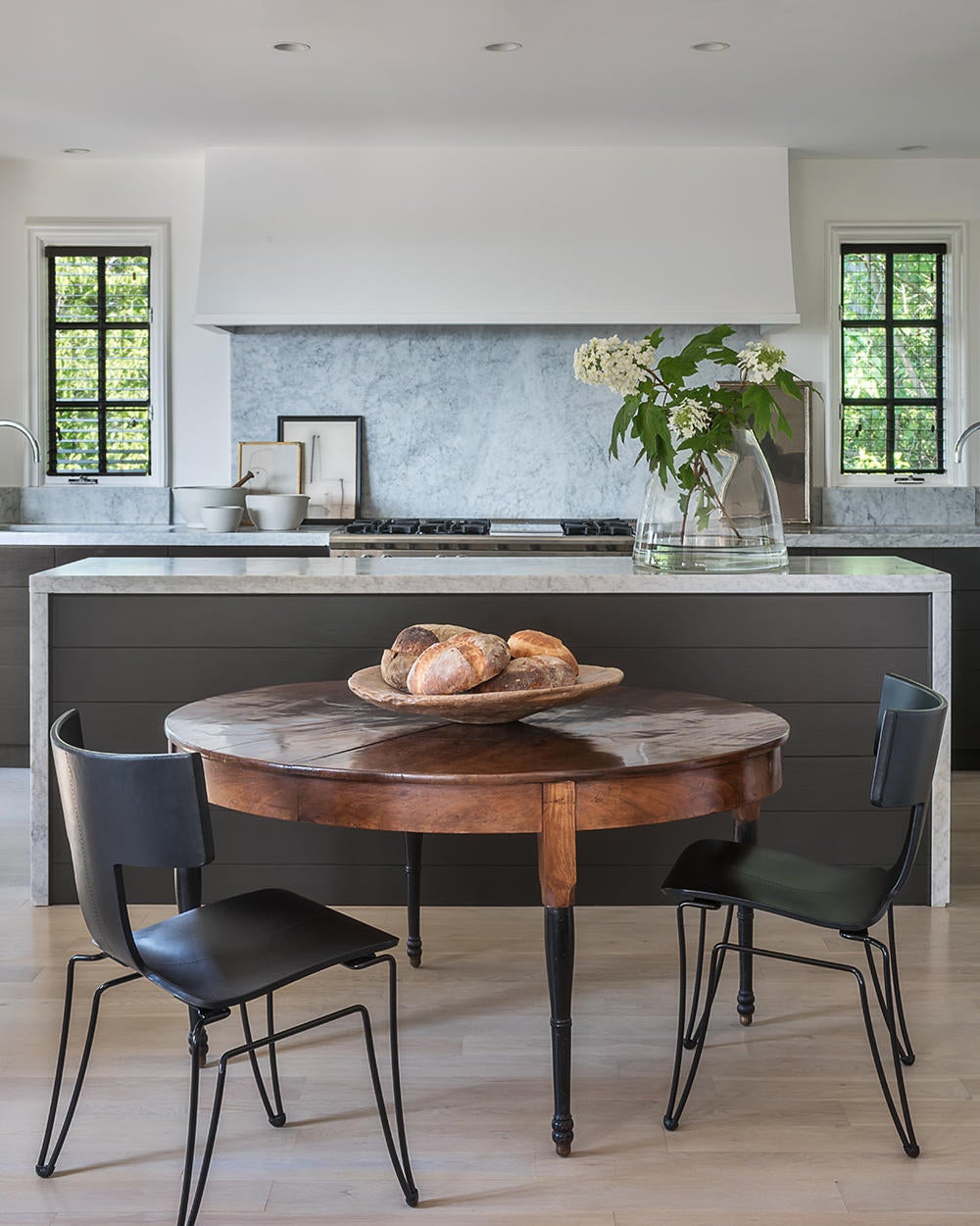
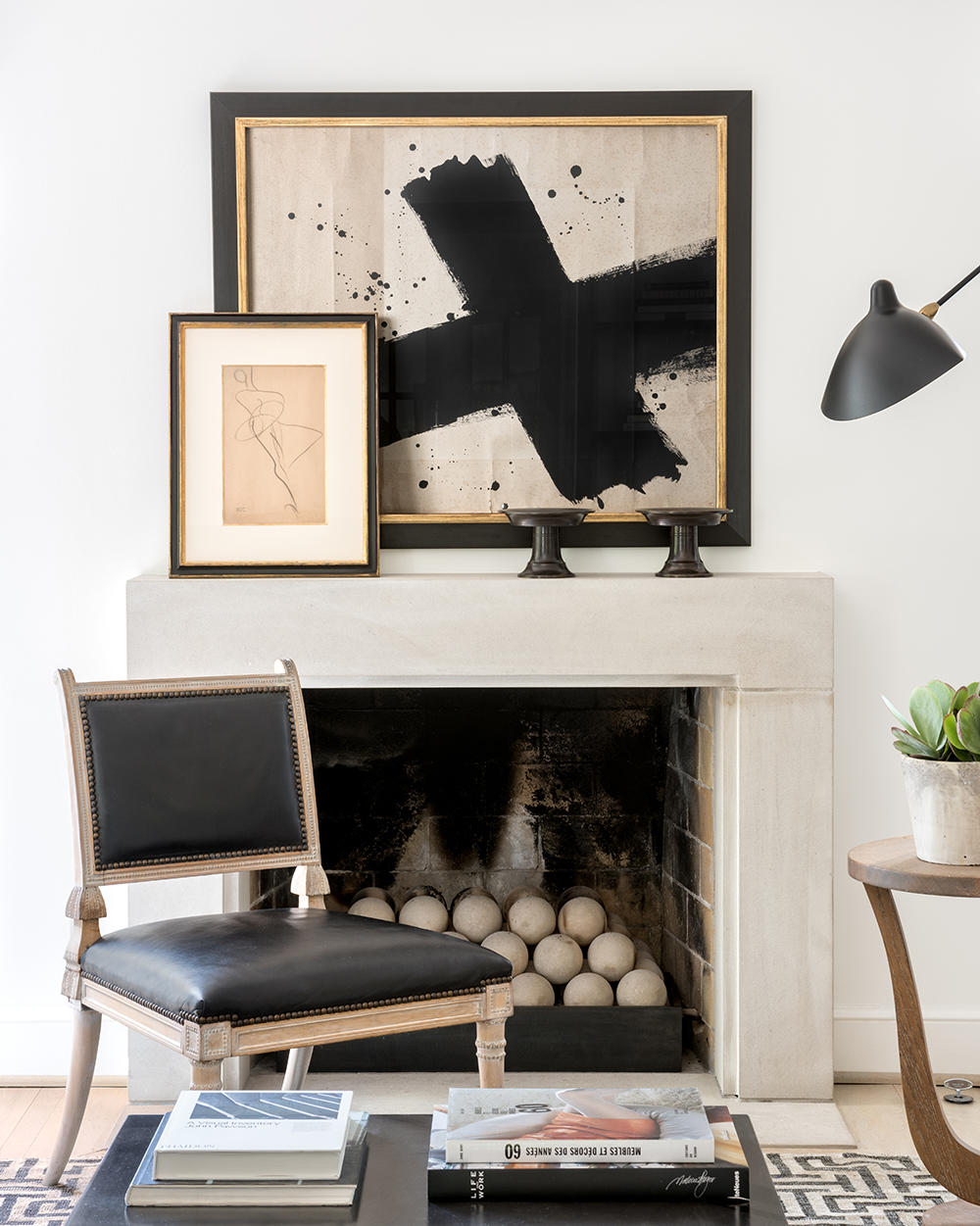
You mentioned earlier that you design and have a lot of furniture built. When do you decide to go antique, to go new, or to design something from scratch?
Each room needs to be a balance—I’m sure everybody tells you that. There’s a certain quirkiness that has to be part of a project, or it isn’t interesting. The cool thing about building furniture is that we can make it more architectural. If the wall is 20 feet long, we can do a 15-foot credenza if we want to. I mean, we have to make sure it can get in and out of the space, but we don’t have to stick with a 6-foot credenza and chairs on either side and things that feel conventional. I love making furniture for that reason. We have a great furniture maker that builds credenzas, beds, night tables—really pretty and intricate things. We’ve worked with him long enough now that we have our finishes down. But then you need to have the old things, too, in order to mellow it out and make it more authentic-feeling. Vintage pieces that have beautiful old patina or old leather that even has spots on it—it’s amazing what they do to make a room feel warm and grounded.
And then we buy a lot of pieces from places like BDDW in New York, which has these really cool lamps that we use often. There are certain upholstered pieces from Christian Liaigre that I love that I’ve used over time. There are a lot of interesting pieces that we buy new but they need to be special.
Do you still go to market to see what’s new, or is that less important to your process?
I go maybe every third year. But I do feel like the more I look at the things that other people are using, the more I feel like I need to use them.
Like it just kind of creeps into your consciousness?
Exactly. When I talk to young designers, the one thing I say to them is try not to look right or left. And not look at what somebody else next to you is doing.
Instagram has been such a culprit in that, too. It feels like you can’t put blinders on.
No, you can’t and there are times when I just stop looking at it.

Sometimes I truly wish there was a button I could push and I’d only see my friend’s pets.
I totally agree. Otherwise, with the people that you really admire, you can get to a place where you start thinking, “Well, what kind of end table would they put in?” It makes for a lot of followers.
You talked about really discovering what you liked when you went on your own. How has what you’re attracted to changed over time?
Oh, unbelievably. I tell my team that when they’re 65 years old, they’ll look back on what they’re doing now and laugh at it. I mean, it’s amazing how you change. When I worked for Jane, everything we did was very English, very feminine, and tons of patterns—a bit like what’s in now, but we would never have put a big modern painting in the middle of it. Somebody published some things from my house when I was in my 20s and I still have that book. Every once in a while, I’ll show it to somebody and they can’t even believe it.
I think stages in life affect what you do, too. When I got out of school, I liked everything very modern. When I was pregnant with my first baby, I remember looking at an antique Welsh dresser that had hearts cut out of the top of it, and I loved it. Now I think, “What was wrong with me?” I always liken it to a werewolf—it’s like you wake up one day and all your bones are changing and you’re confused. And as your style evolves, you have a whole set of new things to learn. It’s actually kind of hard.
You have to become an expert all over again.
I can remember when I moved on from my English period, my attic looked like Camden Passage. I would go up there and it was all Devonshire dogs and silver picture frames. And my downstairs was stark. I was to the point where I thought if there was a pea in the middle of the floor it would be too much.
Where do you find yourself now when you think about the work you’re doing aesthetically?
I think you always think you’ve made it finally. It’s always like, “Now we’re doing exactly the right thing.” Now, I feel like it’s just a mix—it’s whatever feels good together, and it’s really relaxing.
Is there a place where you want to grow or expand next?
More than anything, it might be changes within the office that keep everybody from being under so much pressure. This last fall was incredibly hard—a lot of traveling for installations kept people away from home and their children. I feel really strongly that work needs to be something that facilitates your life and makes your life better. Your whole life should not be work, and I feel for some of the people in my office because they’ve had to work so hard this fall.
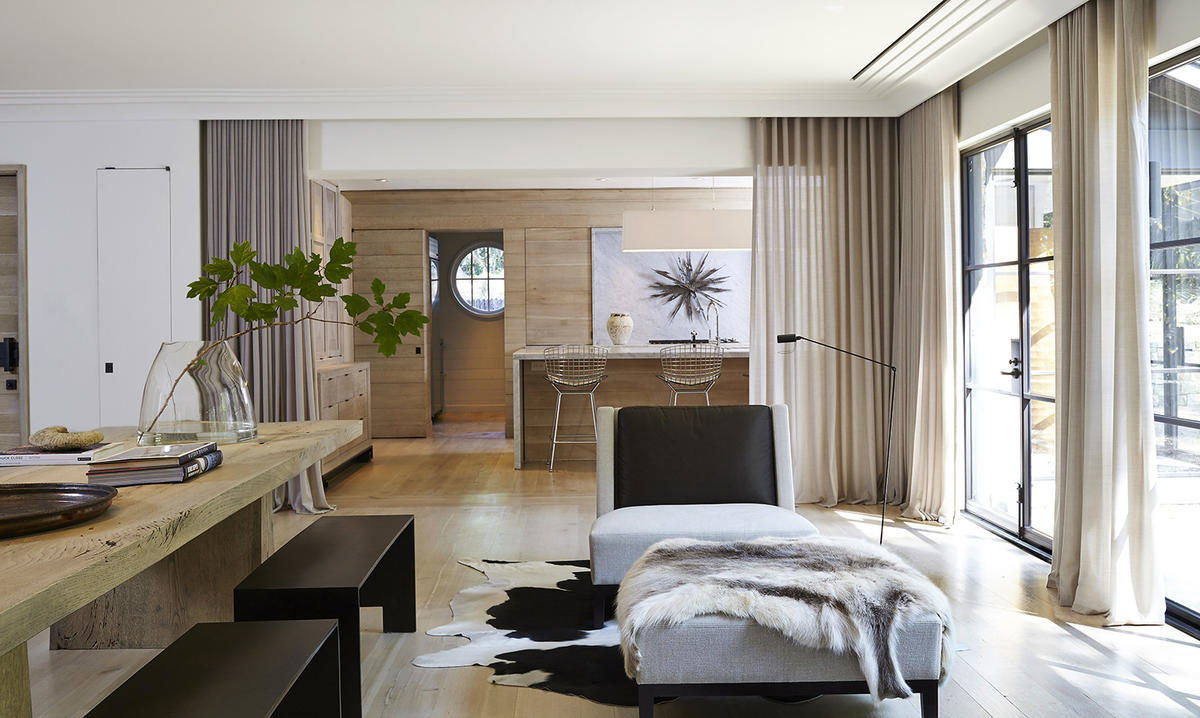
Is that unique to those six installs being compressed into that short period, or does this go back further than that?
It’s part of what I was telling you about scheduling. We have one project in Durham, North Carolina, that was supposed to install last February and we ended up trying to get them in before Thanksgiving. And the poor client—they had to rent a place to live and then they lost that lease, so they moved three times. The other thing is that with delays, it becomes a lot more costly for them. It’s not like there’s just a certain amount of work and then we’re finished—if the builders delay six months, there are still more things for us to be involved in, and more questions to answer, and that we’re billing hourly for. It ends up costing them so much more money than if it’d been on time.
What’s the biggest thing you wish you knew when you started?
When I first went to design school, I had no idea what it was. I mean, nobody did back then. I wish I had known how much involvement there was with people. If I visualized what I thought I was going to be doing, I was probably standing alone in a room saying, “Paint that wall brown.” I’m not saying I don’t like it, but there’s so much more deep personal involvement with people [than I expected, and] I think it’s very good for me because I am an introvert. I don’t know that I would have chosen this field if I had known [how social and interactive it is]. I also had no idea it was a spectator sport. It really is. Everybody’s watching what you’re doing. Everybody’s watching what everybody else is doing. Everybody’s commenting on what everybody else is doing. It’s design, but it’s also entertainment, and I wish it wasn’t. I wish there was more privacy in it.
Is that from the media perspective or social media, or has that always sort of just been part of it?
It was magazines before it was social media. And it was sort of a shock to me to have somebody from a different city comment on something I had done. It’s something I think designers need to ignore. The project that Anna is pushing me on so hard this week—I will say that it goes through my mind what people will think if I specify certain things. It’s like, “This is probably the best thing for the client, but what will other people think?”
Because it’s not fancy enough?
This client is very comfortable with it, but it’s not incredibly cool. And I don’t love it, but I do have those thoughts.
How do you decide what you say yes to?
First of all, [I consider] who else is on the team—the client, the architect, the builder and sometimes the landscape architect. If it’s a good architect, I’m in.
Even if you don’t like the client?
Well, if I don’t like the client, I’m not in. If the client is bossy or controlling—we’ll end it right away if we don’t feel like they’re a kind person. And the difference in levels of kindness is shocking! I mean, some people are so kind and grateful, and you just sense it right off the bat and want to work for them. And they want their house to be wonderful for all the good reasons. It’s inspiring, it’s motivating.
And then good architects will draw up plans that are for a great house but also have all the information. The difference between one architect and another is huge, and clients quite often don’t know the difference.

They never really see that or have to work with it in the same way that you do.
And they may only do it once in their life, so they don’t know that an architect is selling them a set of plans with no elevation. They don’t know—and the difference in plans is shocking when people are paying the same percentage. If the architect hasn’t done all the details, then we do the details generally, so they end up paying us exorbitant hourly fees when it’s something the architect should have done.
The other deciding factor is whether the client is OK with our process—and one of the parts is that they’re not there when we install. Men, especially, get so excited about the installation that they’ll say, “We’re going to stay in the guesthouse. We won’t bother you.” We’re like, “Please don’t stay in the guesthouse.” Because if they come in, everybody stops working and starts performing. They’re scared to say out loud that anything is incorrect and it just slows down the process like crazy.
Because you can’t be like, “How do we fix this?” with the client standing right there.
Yes, it makes it harder to say, “Look at this bump here.” We do have our furniture maker go on all of our installs with us, which is wonderful. We put his things in place and then the next day he flies in, so if cabinet doors need to be adjusted or any finish looks pinker than it’s supposed to, he just brings all his stuff and makes every adjustment right there. If it’s a big problem, which it rarely is, he’ll take it to the garage.
That’s amazing.
We try to do every personal thing we can for them while they’re there. We place orders with the local wholesale florist. We bring vases. We do simple flowers that the client can reproduce. And we take books. People always tell us not to bring books, but we bring between 100 and 300 books and they never want us to take them back once we put them out. We’ve developed this long list of books that are really cool art books, architecture, travel, anything cool. And then nobody ever lets us take them. It goes on their approval list. We have the list of approval items that they can take or not take, and everybody always keeps almost everything. The last install we did, the architect walked through and went, “Oh, my God, I need these books.” It’s just amazing how much better it makes everything feel.
To learn more about Betsy Brown, visit her website or find her on Instagram.
Homepage image: Courtesy of Betsy Brown




























